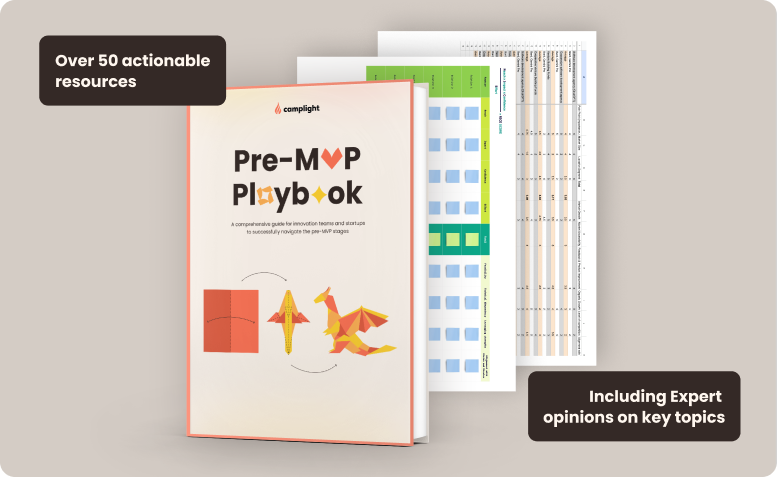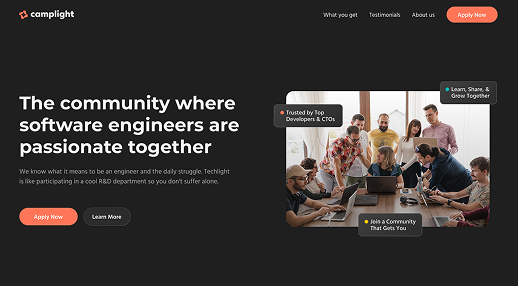“Design is intelligence made visible” – this is what the branding consultant and author Alina Wheeler says and she strikes a good point.
Design holds significant value in multiple aspects of our lives. It is a powerful tool for problem-solving, innovation, and creativity, it’s also a key differentiator and plays a crucial role in creating positive user experiences.
So far, so good. But what about Design Thinking? What is it actually and how can startups make the best use of it? And how can they utilize Design Sprints for growth?
There are plenty of articles, blog posts, detailed explanations, guidelines, and whatnot on the web. You can certainly gain some useful knowledge from them. We are here to share our personal experiences instead.
Camplight believes that the fusion of Design and Thinking is not a simple marriage of two concepts. It’s a bold reinvention that breathes life into startups, propelling them towards uncharted territories of success.
And without further ado, let’s share with you what we have learned so far.

Understand Design Thinking and Design Sprints
To understand Design Thinking, one should remember that it is not just a theoretical concept, but a mindset and approach that is best understood through practice. Our advice for startups is to embrace curiosity, experimentation, and a willingness to learn from both successes and failures.
A free mind can open multiple, often unexpected, doors.
If you’ve ever wondered how Design Sprints work, you’re not alone. The truth is that you’d have to give it a try a few times before you really understand how everything functions. We can confirm that each sprint is better than the one before. It’s not like it is complicated, it just requires some practice before you become successful and time-efficient. What doesn’t, though?
Design Sprints offer a way to tackle complex problems in a condensed time frame. By breaking down the process into bite-sized chunks, they allow teams to work with far greater efficiency than traditional methods. The next question is “How?”.
Essentially, a Design Sprint involves a five-day process that takes a team from problem to prototype. Each day is focused on a specific goal, with a clear objective in mind. There are no strict “rules” though. Some of our sprints take 5 days, others happen in only 3. We tend to focus on the problem, the solution, and collaboration, rather than following a tight schedule.
We can give you a fresh example from a few weeks ago when some of our team members dove into a three-day Design Thinking Sprint in the mountains. The problem? Cultural misalignments within the companies. The solution? It’s yet to be discovered. That does not mean that we did not learn a lot in the process.
For instance, we got acquainted with Daniel Ofman’s Core Quadrants model. It can be a valuable tool for individuals engaging in the design process to gain insights into their strengths, pitfalls, challenges, and allergies. Startups are particularly susceptible to changes, so applying this model to the framework could be extremely useful.
We also prototyped a ChatGPT journey to explore some “core competencies” and “core quadrants”. We like to think differently and redefine the norms. There is always something to be discovered, something new to be learned. Later on, we find scenarios where we can implement the knowledge.
Benefits of Design Thinking
There is a reason why the concept of Design Thinking is gaining more and more popularity. The methodology has consistently proven successful in our experience. We will try to structure the main benefits we’ve managed to gain so far:
Eliminating unclarity
Design Sprints help to get everyone on board. The goal is set, a strategy is carefully made, and all questions are answered in detail. Confusion is removed.
Prioritizing
An overview of what must be built is crucial. We also discuss where to start, what is most urgent, and what could wait for another week or two.
User-centric decisions
Design Thinking is rooted in empathy and understanding user needs. We practice active listening and empathy while engaging with people to understand their experiences, pain points, and aspirations.
Rapid prototyping
It helps us stay on track and ensure that the result will be a product that meets the customer’s needs. Prototyping promotes effective communication and allows us to align our vision, validate ideas, gather feedback, and mitigate risks.
Accelerated
Decision-Making
Although that’s not a fast rule, Design Thinking Sprints often enable teams to make quick decisions by compressing the problem-solving process into a short timeframe, typically spanning a few days. We implemented this strategy in some of our projects and the results were quite good. We definitely saved time.
We cannot go without mentioning the case study of Slack, the real-time messaging app. The developers utilized Design Thinking principles to redefine workplace communication. They realized the need for an organized, efficient, and easy-to-use platform for workplace communication.
Applying Design Thinking, they created a tool that grouped conversations into channels, allowing for easy navigation and improved productivity among the users. We use it in our everyday work to stay on track.
The successful stories do not stop here, though. Google, Airbnb, and Nike apply Design Thinking in their daily work as well, and use it as a means to success. Indra Nooyi, the former PepsiCo CEO, told Harvard Business Review that Design Thinking played a huge role in almost every crucial decision the company made. During her 12-year tenure, sales increased by 80 percent.
Applying Design Sprints
Design Sprints are a series of steps designed to tackle a certain problem quickly and effectively in a short time. However, implementation can be a bit tricky, especially if you’re new to the process.
Agenda:
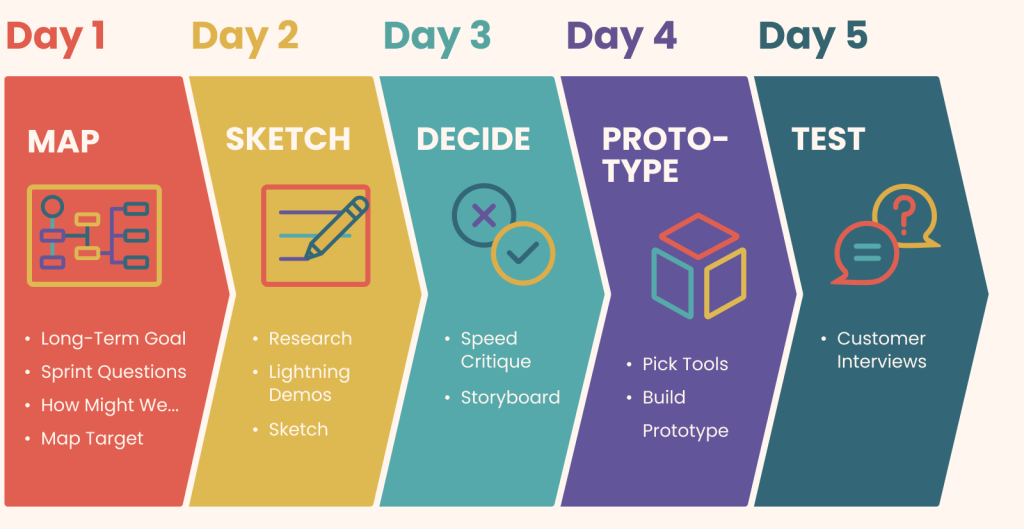
To get ahead, consider the following tips and tricks:
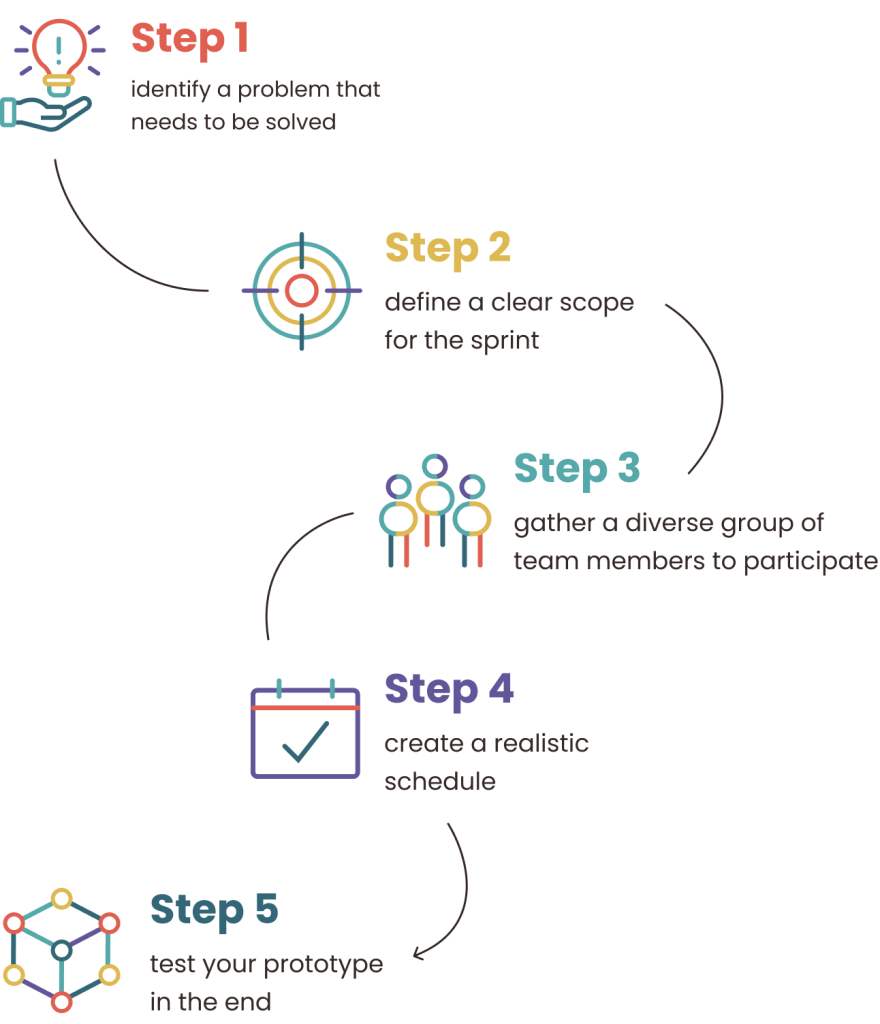
Now, let’s give you a more practical example: three of our teammates are working on a project called Assista, a time-tracking bot for Trello. They have figured out a systematic workflow, effectively applying the ideology of Design Thinking. First, they go through a retrospective session to review the goals and metrics of the previous cycle, then they set goals for the current one, and get into the phase of shaping (creating new features and actually diving into a design sprint).
The idea comes from Basecamp’s implementation of the ShapeUp method. Based on their previously collected ideas, the guys generate new concepts using a Miro board. The approach they take to shape them depends on the complexity of the desired feature. It could involve collaborative effort from the team or be handled individually by only one member.
From all Design Sprint templates in Miro, we roll with Official Remote 5-day Design Sprint and this is how it looks in practice.
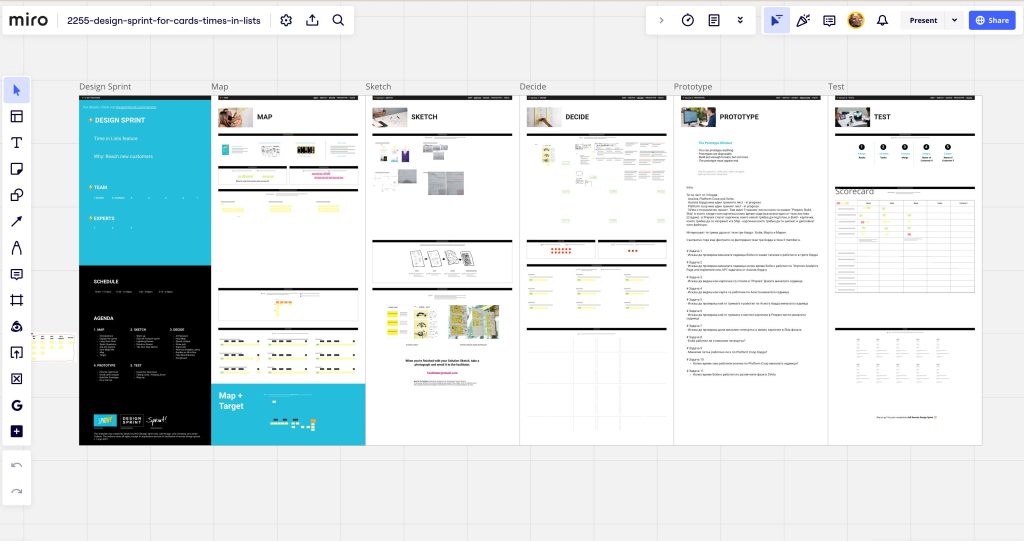
Once this is done, a prototype is created. Why? So that we can test an idea with users, and identify flaws, usability issues, or gaps in the solution before investing significant resources into full-scale development. In this specific example, the team of Assista came up with a clickable Figma prototype, which was tested by potential users. The sessions were recorded for future use and to gain a deeper insight.
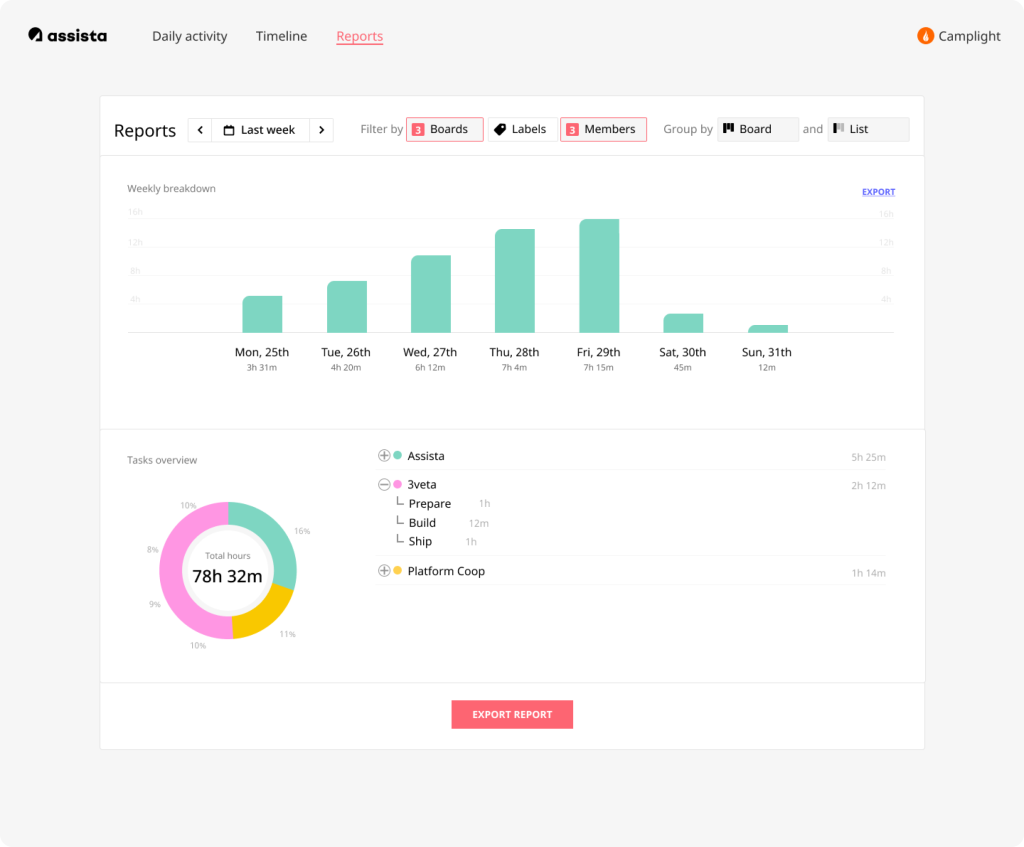
After the shaping phase is completed, the Assista team focuses on the building part. And that’s how the “Double grouping” feature was built and launched.
First and foremost,
selecting the right people for the sprint is crucial.
The more skilled in the specific field they are, the smoother and faster the process goes.
Secondly, there is no correlation,
between conducting a design sprint and achieving success straight ahead. We never have any guarantee that the outcome will be what we want it to be. Well, taking risks is part of the game.
The effort required to execute a design sprint can be substantial, requiring the investment of time and resources. And of course, there is always the timely nature of Design Sprints to contend with, which can add additional pressure to the process.
This makes it critical to have the right skills and expertise at the table, to ensure the best possible outcome. Perhaps most importantly, Design Sprints are built on assumptions and uncertainty, which can be difficult for some teams to navigate.
Moreover, there is a high chance of going in the wrong direction from the very start. Like everybody else, we have faced this a few times. Well, we are always open to learning from our mistakes. Thus we need to highlight the importance of an open mindset once again.
Take a look at what Tim Brown, CEO of IDEO says about Design Thinking – “It requires us to embrace the messy, uncertain, and ambiguous nature of the creative process, but it is in those challenges that true innovation emerges.” Our experience so far proves it right.
To sum up
In conclusion, Design Thinking is a transformative force that fuses empathy, intuition, and creativity to create disruptive solutions. It sees beyond mere functionality and creates products that are not only useful but deeply resonant.
As we’ve journeyed through this exploration of Design Thinking and Design Sprints, we hope you’ve glimpsed its power and potential.
Now, it’s your turn. Embark on your Design Thinking journey. Incorporate Design Sprints into your process. Step into the exciting world where design meets thinking – and create solutions that not only solve problems but redefine the norms. Are you ready for this transformative journey? Let’s start designing the future, today.
We are here for you in case you need some navigation, or simply have an idea to share. Don’t hesitate to contact us.
